Simple Envelope Pillowcase for Throw Pillows
This shop has been compensated by Collective Bias, Inc. and its advertiser. All opinions are mine alone. #WorryFreeMessFree #CollectiveBias
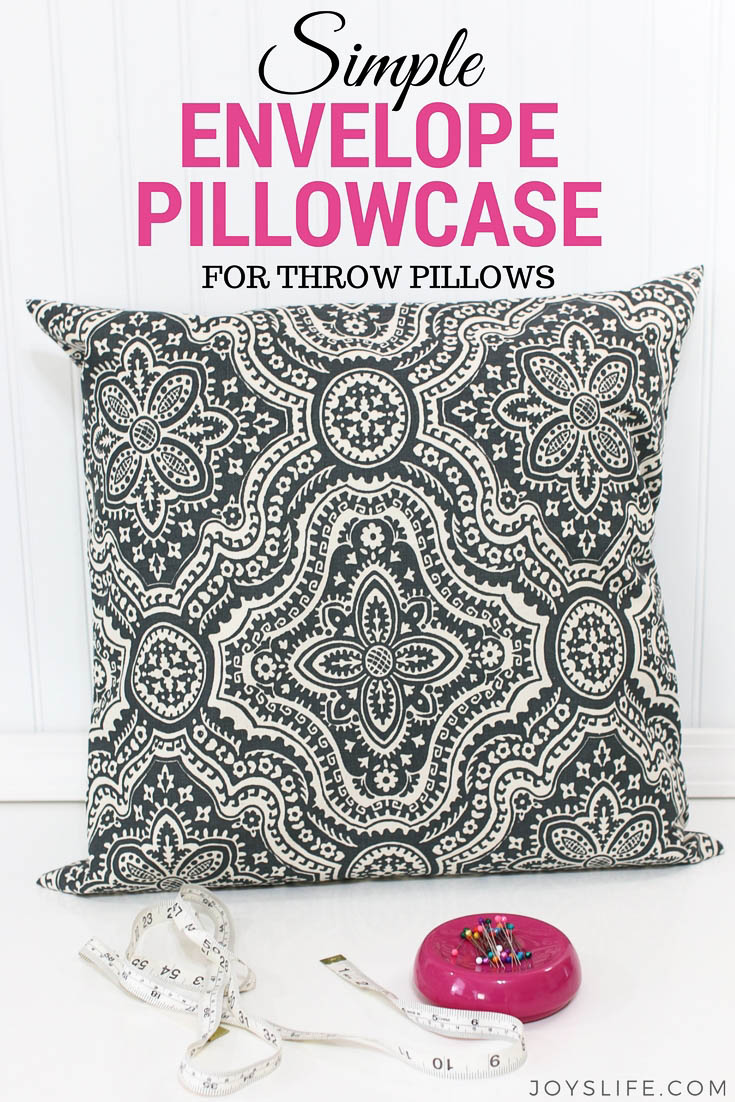
Earlier this year we finally replaced our sad, old couches with a few new ones. It was such a huge improvement that it was a while before I noticed that they looked really plain. To be honest, my whole den could use a few more personal touches. Today, I’m starting with a super easy project that helps you (and me) give a unique look to any room, making a simple envelope pillowcase for throw pillows! You’re going to love this project because it’s easy and budget friendly. Whew.
Supplies for Envelope Pillowcase for Throw Pillows

The supplies for these simple envelope pillowcases are super easy to find. You’ll need: pillow forms (I’m using 20″ x 20″), fabric (I’m using a yard and a half of duckcloth to create two pillows), a self healing cutting mat, rotary cutter or scissors, measuring tape, sewing machine, thread, ironing board and an iron. I use this iron. If you’re like me and have a tough time keeping your seams accurate, you might also like to get a 1/4″ foot and a 1/2″ foot for your sewing machine. Keeping an accurate stitch is important in most projects, but in this one, you’re going to get a really good result even if everything isn’t perfect. This is a simple project where you’re just using a straight stitch, so don’t worry!
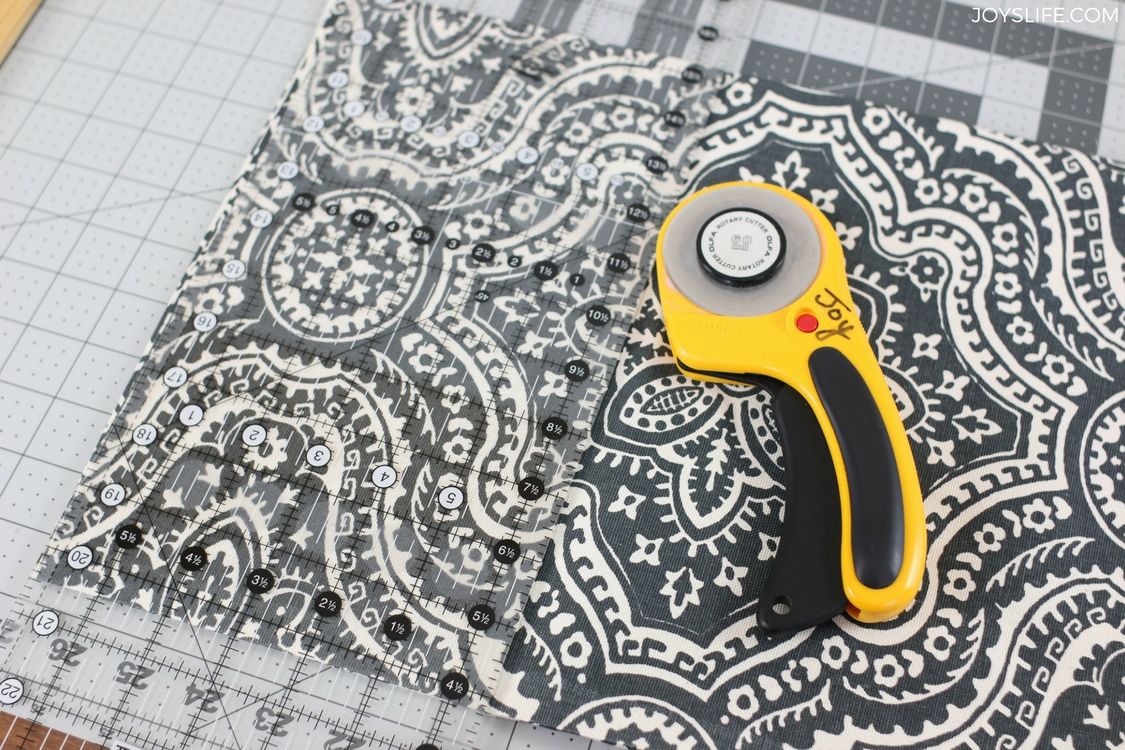
Measurements for your Pillowcase
I bought a yard and a half of duckcloth to create two pillowcases (and I had a little left over), but I’ll tell you how to get the measurements you need for a single pillow.
For one 20″ x 20″ pillowcase, you’ll need fabric cut to 20″ x 44″. That’s 20″ for the pillow width. Next, multiply the pillow size 20″ x 2 for the length = 40″, add 4″ for hemming = 44″. That’s how you get to 20″ x 44″. You can use this formula with any square pillow, just adjust the 20″ for the size pillow you are using.
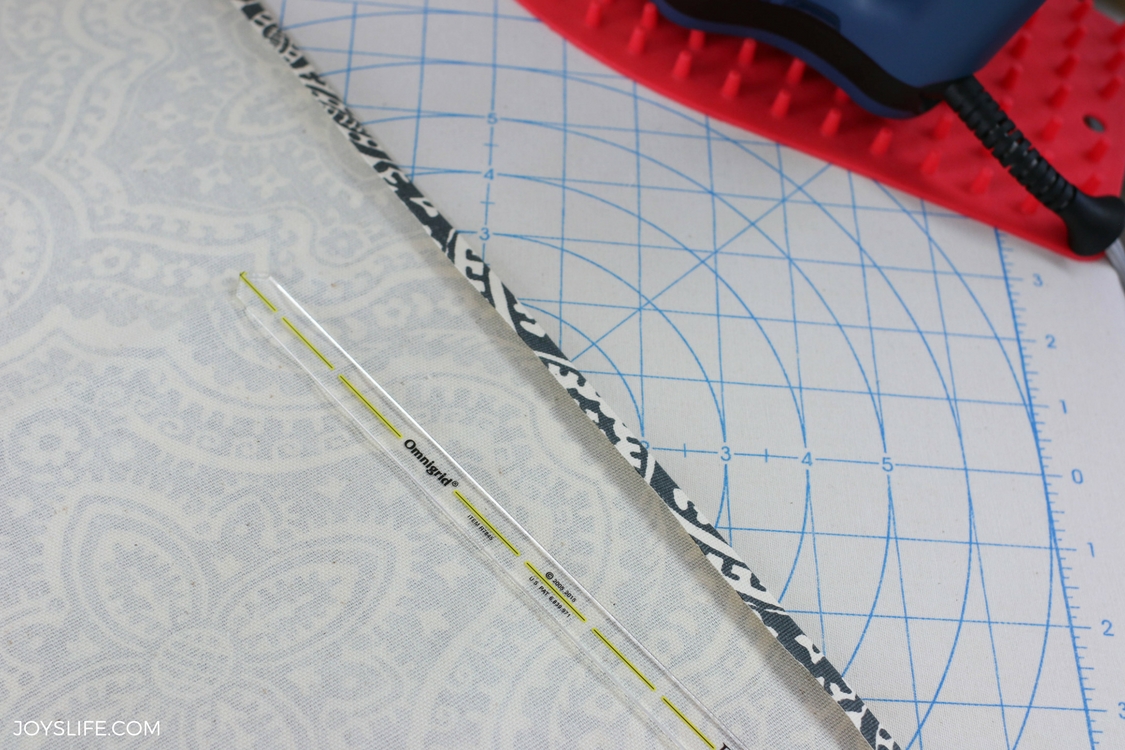
Once you’ve got the fabric cut to 20″ x 44″, fold the 20″ end under and sew a 1/4″ seam on each short end. To help you keep the fabric folded for sewing, give it a quick press with an iron.
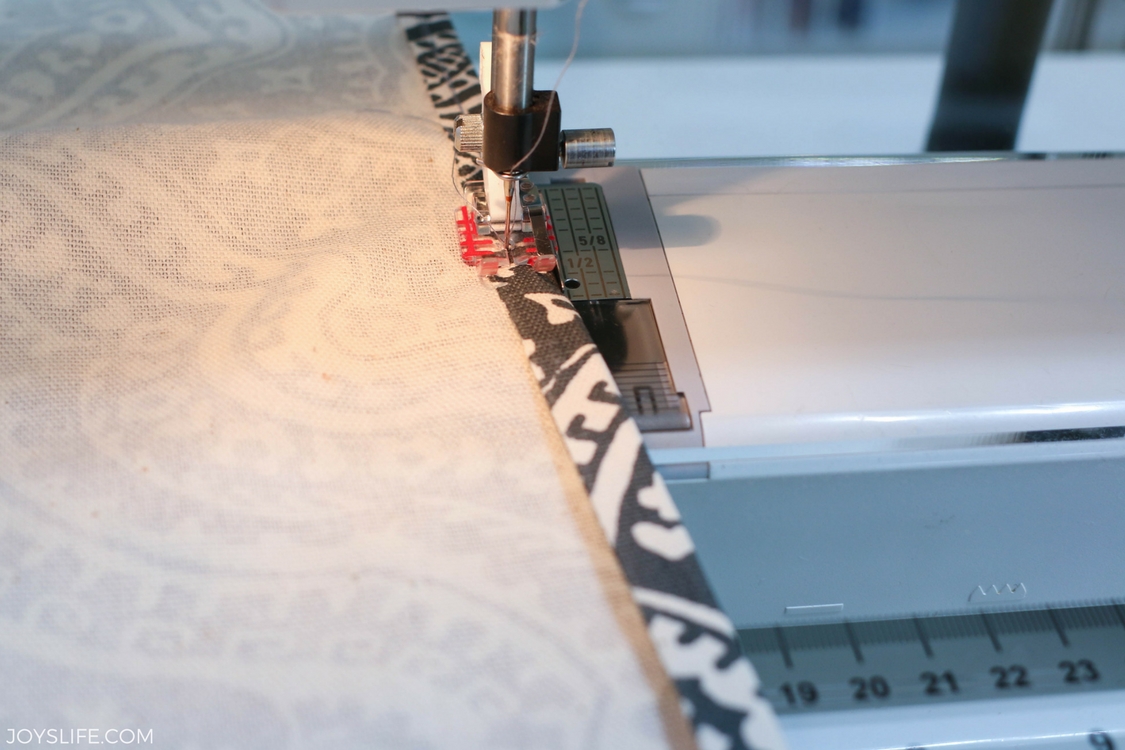
Sewing a 1/4″ is much easier after ironing the fabric and using a 1/4″ foot.
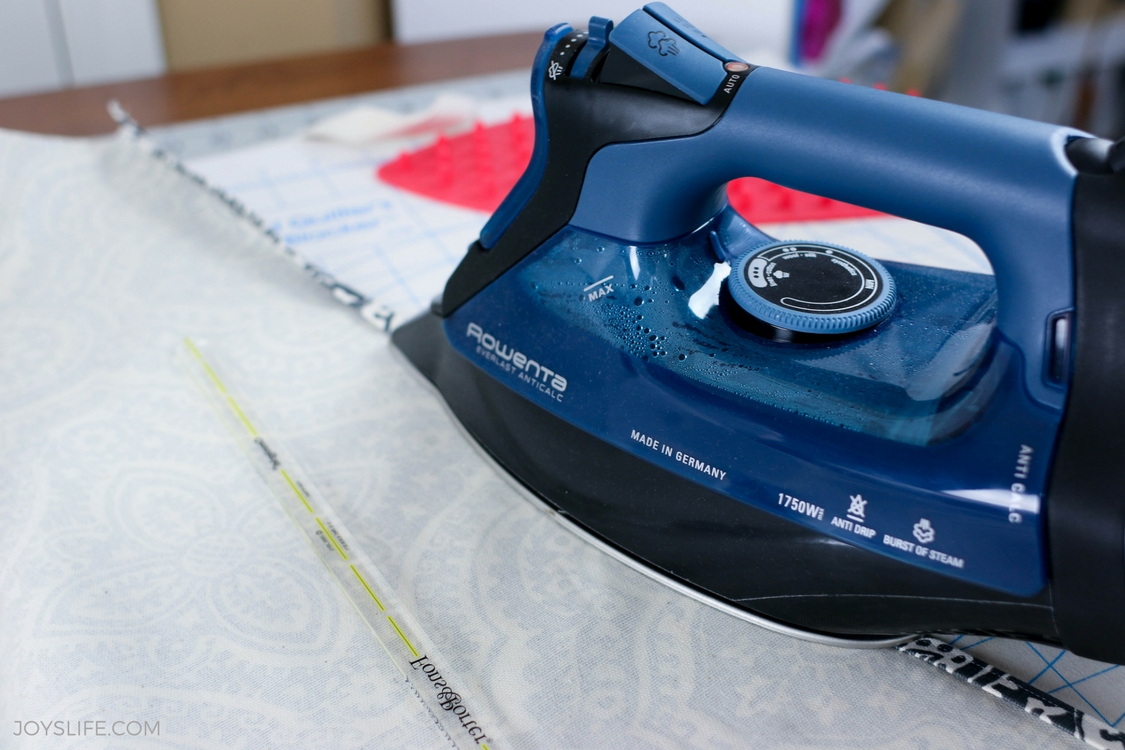
After you’ve sewn a 1/4″ on each short end, fold the sewn hem over and stitch another 1/4″ seam to hide the unfinished edges. This also adds strength to what will become the opening for inserting the pillow form.
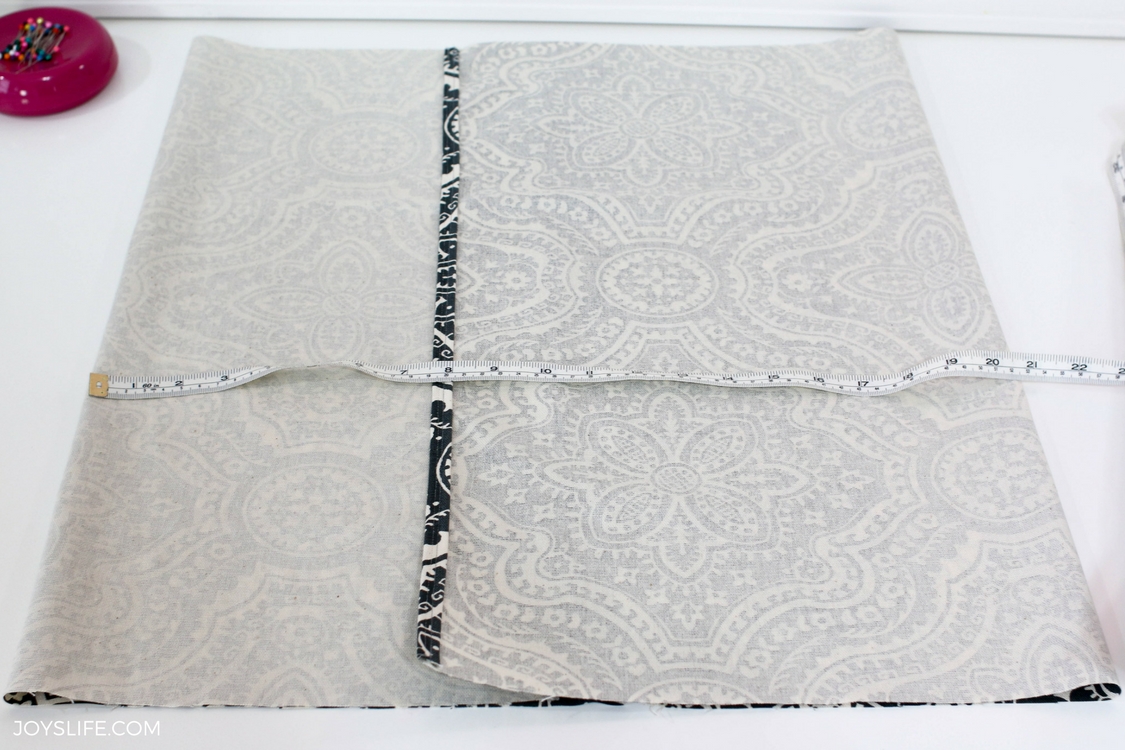
Lay the material right side up and fold back each end until the sides overlap at least 3″. Make sure that the distance from side to side is at least the size of your pillow form, in this case 20″. You can adjust your pillowcase for a squishy, not full pillow by reducing the size a little, but make sure that your case is big enough.
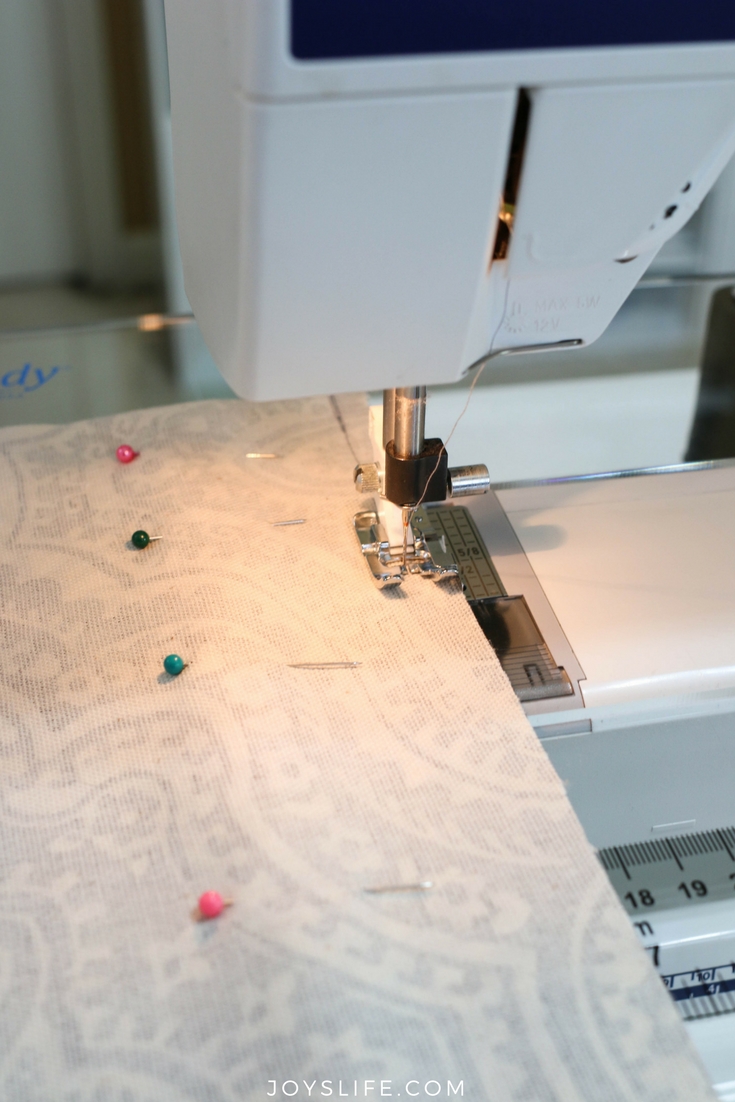
Pin your pillowcase and stitch a 1/2 of inch from each unstitched edge.
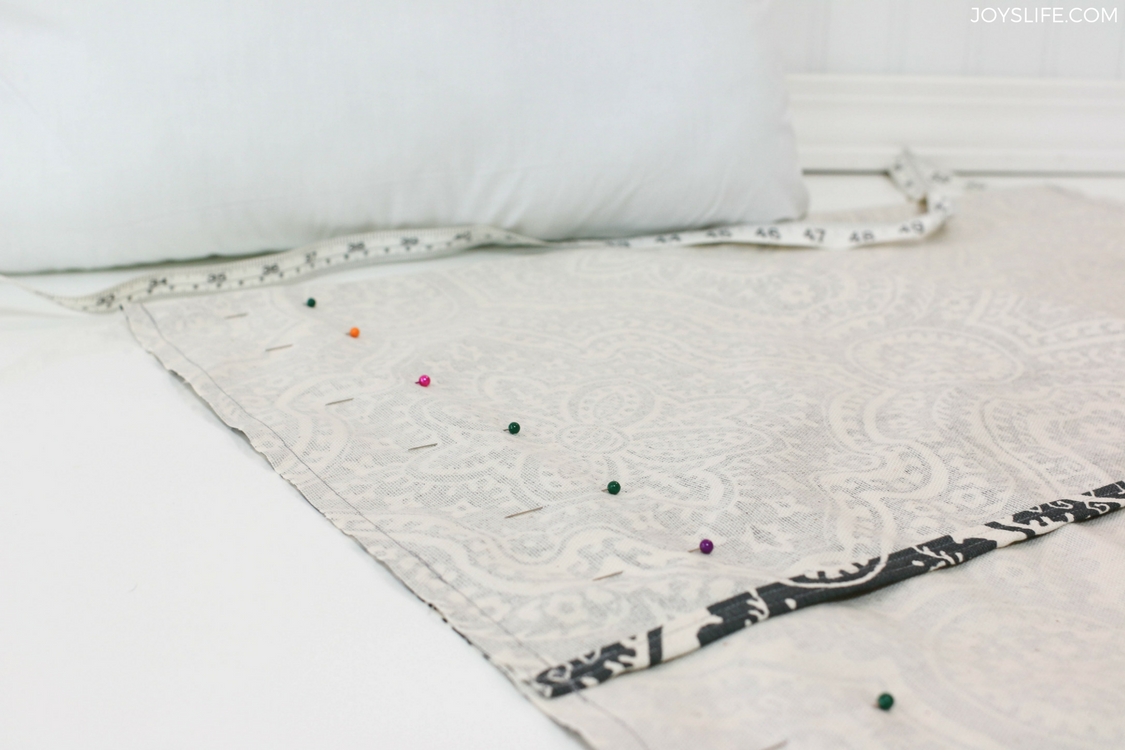
Remove the pins.
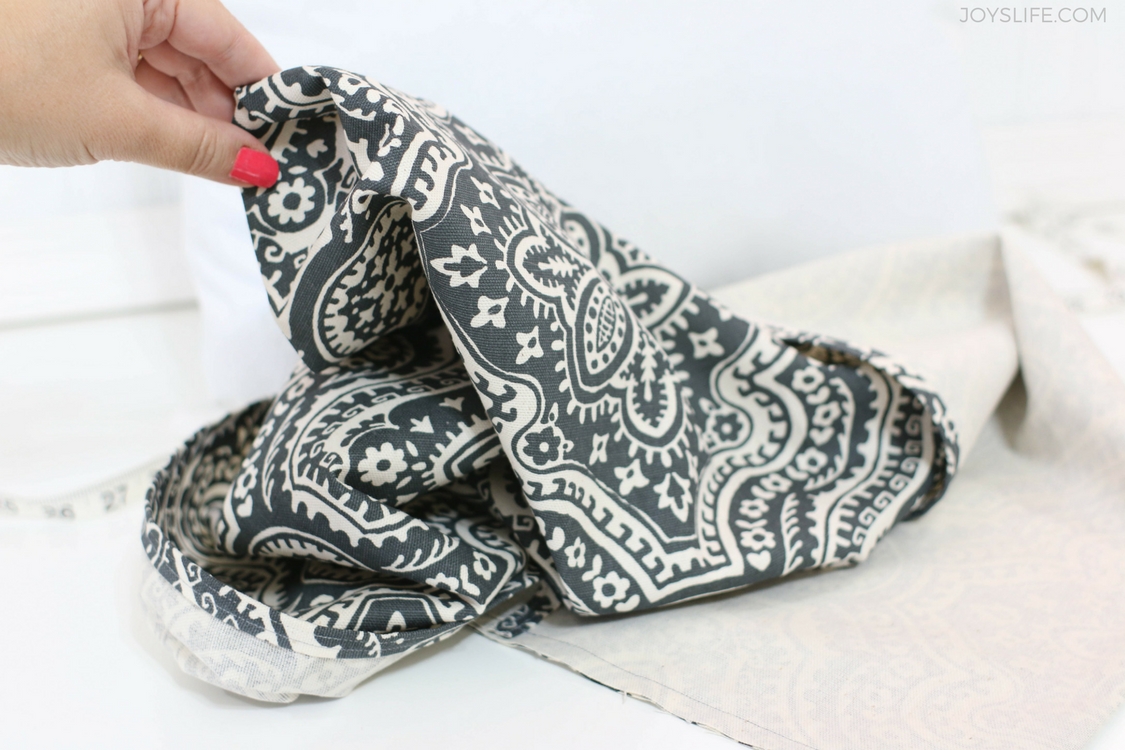
Turn the pillowcase right side out.
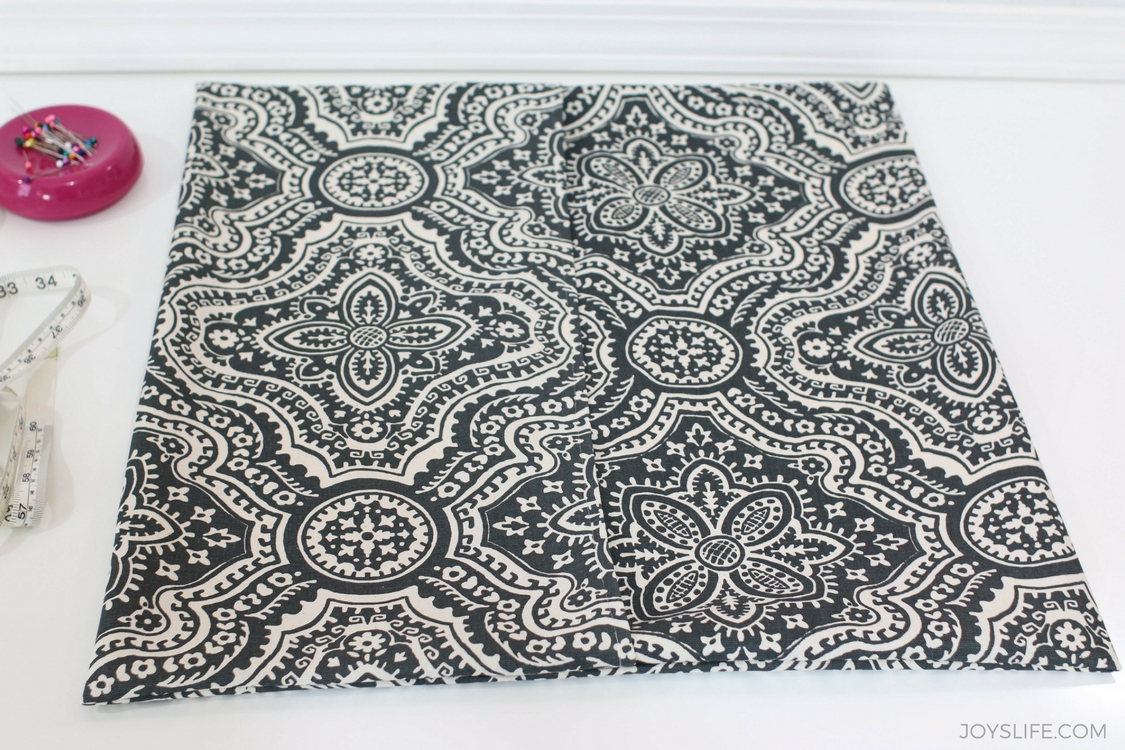
You’re all finished! You just need to add the pillow form.
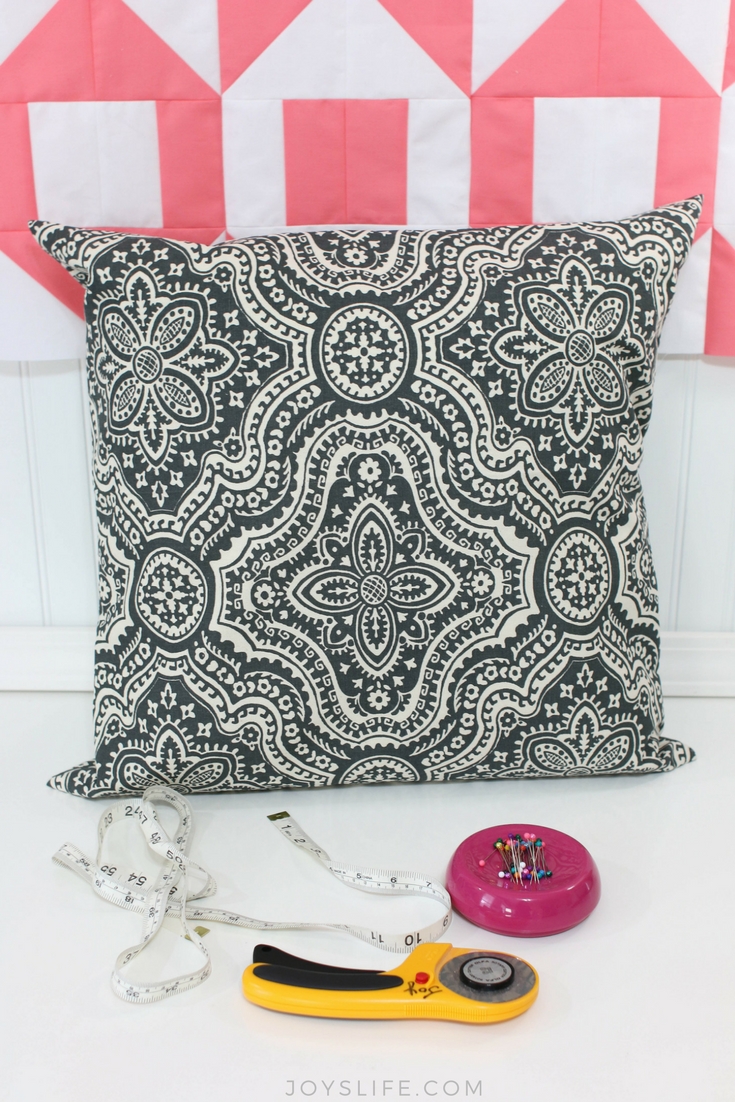
It’s done! Now you’re almost ready for the couch or chair … unless you’re like me and have a drooling dog and like hanging out and eating in the den, where the pillows will live. If that’s you too, you should get some Scotchgard™ Fabric Protector. It can protect items from all around the house, like clothes, upholstery, chair cushions, table lines and these pillows. It’s invisible protection that repels liquids and blocks stains, so you can worry less, no matter what life throws at you…or spills on your pillows.

I picked up Scotchgard™ Fabric Protector at Walmart. By the way, you can pick up a lot of what you need to create these pillows while you’re there.
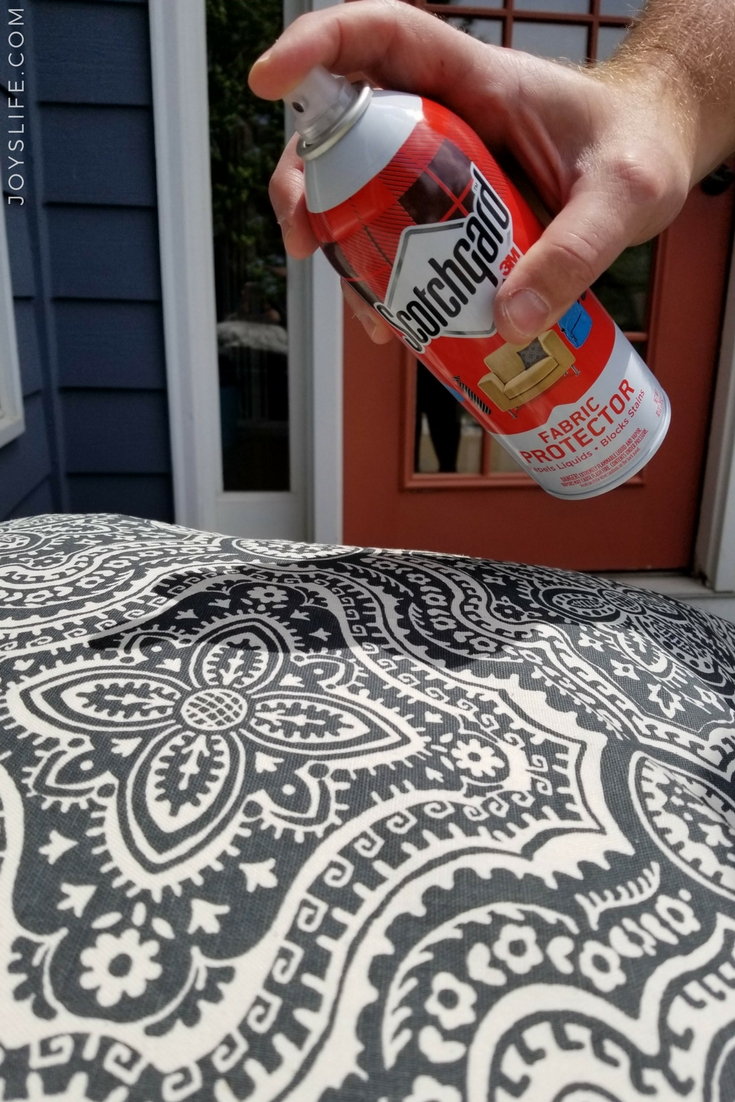
Protecting these pillows with Scotchgard™ Fabric Protector was easy. First, you should protect surrounding non-fabric materials from overspray. If you do overspray, wipe it up quickly. Next, shake the can well and do a test for colorfastness. Spray a hidden area until it’s wet and wipe it vigorously with a white absorbent cloth. If color rubs off, don’t use it. Simple.
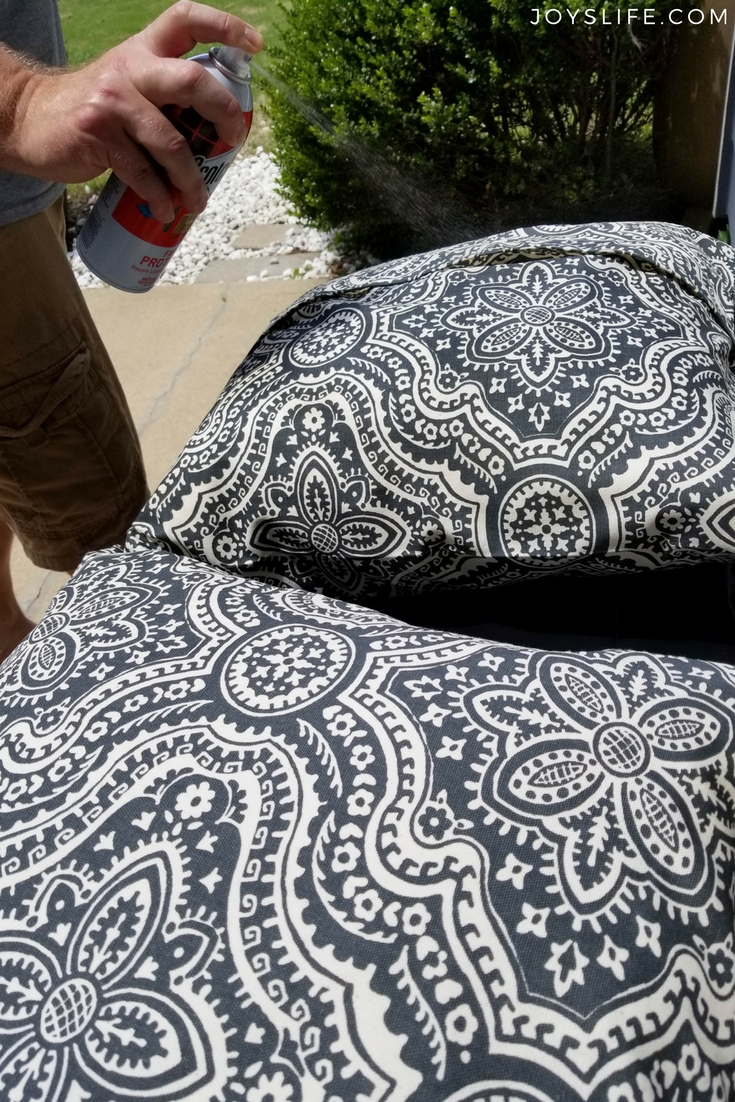
When you’re ready, hold the can upright 6″ (15cm) from the fabric surface. Overlap spray using a slow, sweeping motion. Two light coats are better than one heavy coating. Allow it to dry between coats. That’s it!
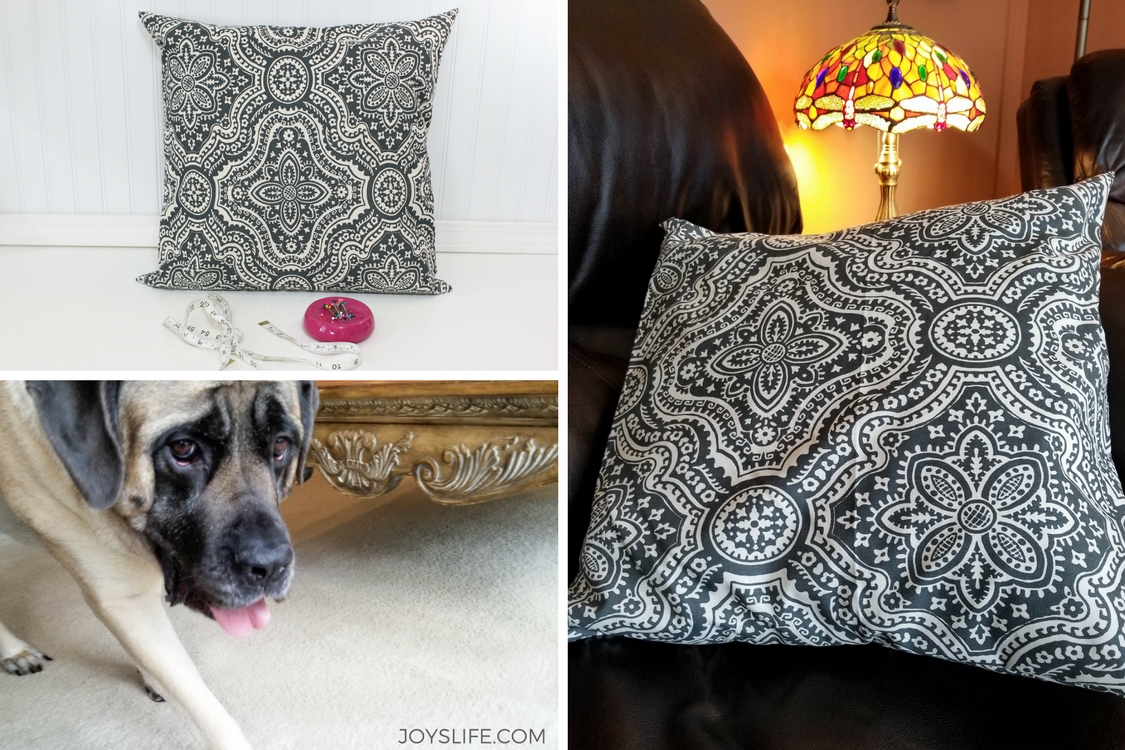
You can reapply Scotchgard™ Fabric Protector after every cleaning or annually to maintain protection. Since durability of protection varies with wear, re-apply the product seasonally, every 6 months, or every couple of months if product is frequently used.
We are loving our new pillows! I’m going to buy more pillowforms and make two more. They’re really adding a lot of style and comfort to our home! I hope you have fun making your own envelope pillowcase!

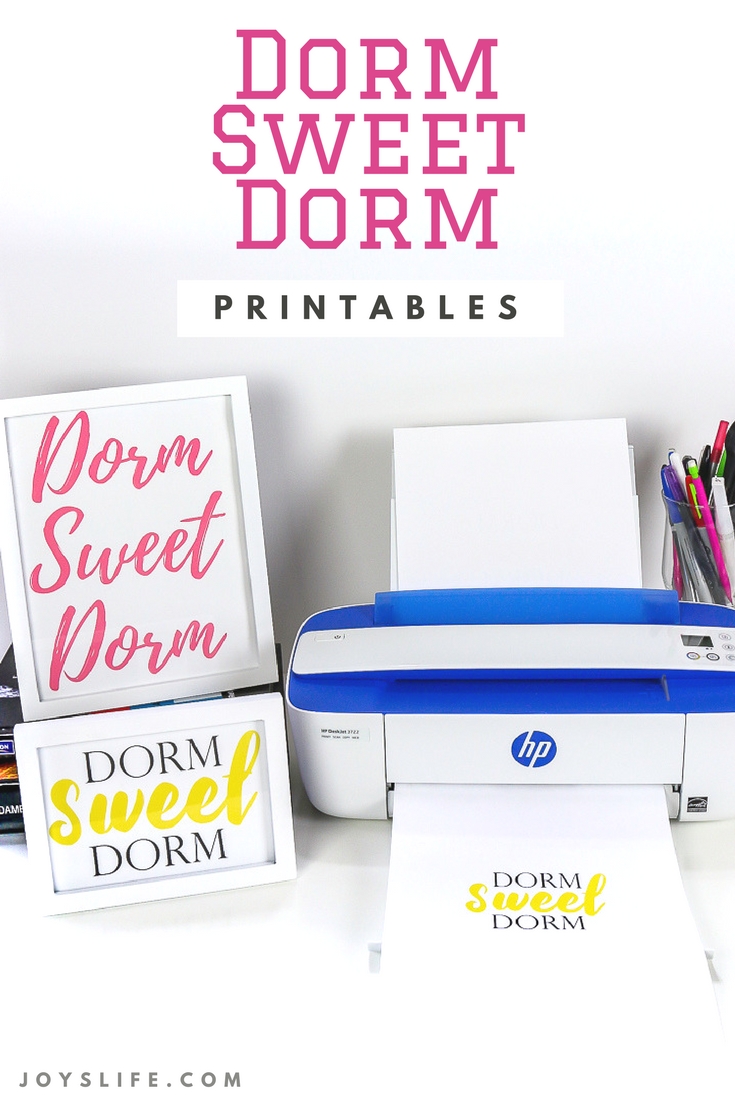
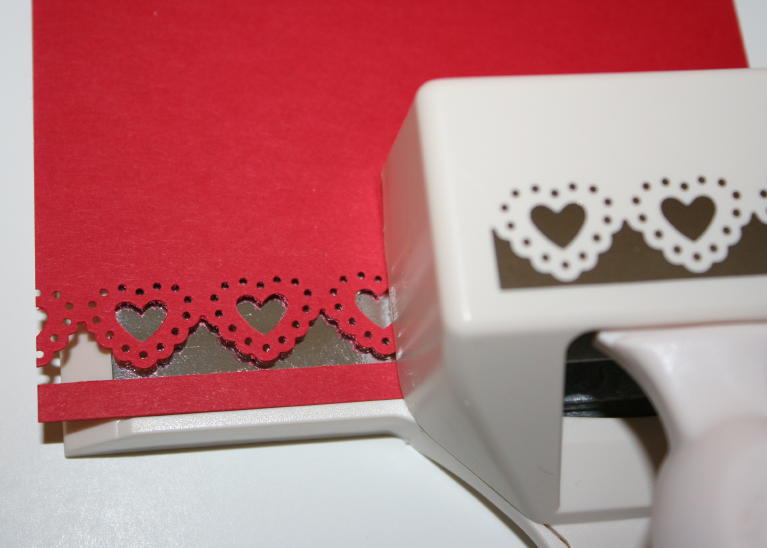

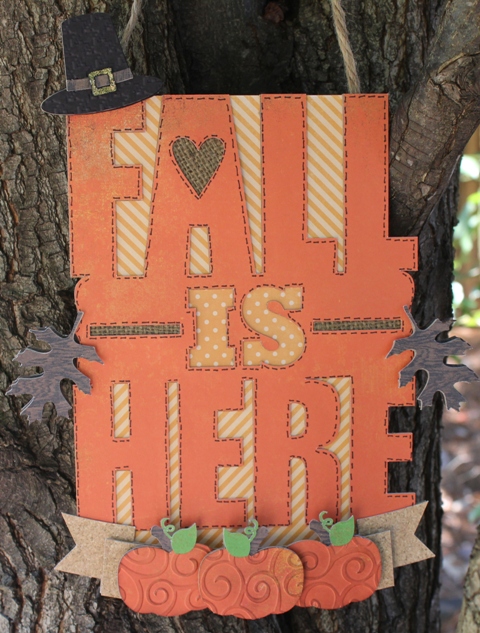
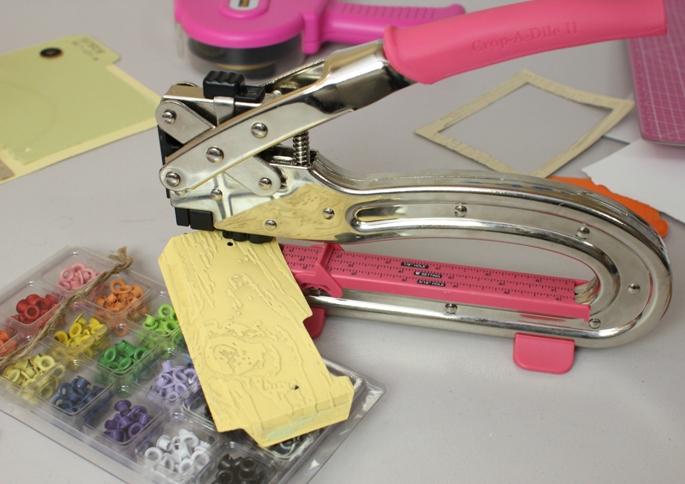
If you will push a small amount of loose fiberfill in each corner before placing the pillow inside, it will take care of your dog eared corners and look more tailored. Great blog. Very easy to understand.
Great suggestion, Alicia! Thank you so much for the kind words too! 🙂
I love your idea and can’t wait to try it.
You explained it wonderfully.
Thank you so much, Jane! I hope you have fun making yours!
If your pillow form is 20″, do you need to add more than 20″ for width to allow for seams?
Hi Denise, I used using a 20″ pillow in this post. For one 20″ x 20″ pillowcase, you’ll need fabric cut to 20″ x 44″. That’s 20″ for the pillow width. Next, multiply the pillow size 20″ x 2 for the length = 40″, add 4″ for hemming = 44″. That’s how you get to 20″ x 44″. You can use this formula with any square pillow, just adjust the 20″ for the size pillow you are using. Happy creating!
Hands down for the so very comprehensive post. With the instructions being clear and concise it will have a any beginner sewer feeling like a professional sewist in no time!! I really wanna try it now but crocheting a couple of pillows, will definitely going to try this for my weekend project. I will subscribe to your blog for more posts like this.
xxx
Hannah
Thanks so much, Hannah! Oh wow, crocheting pillows! That will look awesome!